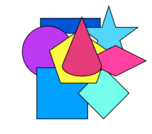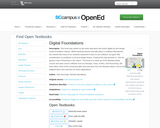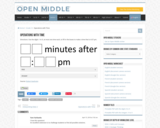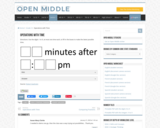
Follow our 5 best tips to create active and engaging online math homework with Derivita.
- Subject:
- Mathematics
- Material Type:
- Teaching/Learning Strategy
- Provider:
- Derivita
- Date Added:
- 06/08/2023

Follow our 5 best tips to create active and engaging online math homework with Derivita.

In this video, Val shares helpful tips to ensure your Canvas courses are mobile-friendly for students and parents accessing your courses on mobile devices.

This is a lesson plan created by Diane Timothy to teach students how to create a collage of different shapes and colors for a second-grade elementary class. This is done digitally on the Pages app. on an iPad. This lesson allows students to learn the app as a class and then get into small groups and work and collaborate together. Eventually students will make a collage with 6 different shapes and colors.Teachers can learn how to use the app in section 2 of this lesson plan.Come join the fun!

Learn about Derivita course settings that will apply to every assignment in your course.

This book was written by two artist educators who teach digital art and design studio foundation classes. While teaching classes that take place in software laboratories, we noticed that many of our students expected to learn to use software, but gave little consideration to aesthetics or art and design history. A typical first day question is, "Are we going to learn Photoshop in this class?" This book is a mash-up of the Bauhaus Basic Course and open source software such as Inkscape, Gimp, Firefox, and Processing. We have taken some of the visual principles and exercises from the Bauhaus Basic Course and adapted them into exercises for these applications.

Atoms contain three types of subatomic particles: protons, which have a positive charge; neutrons, which have a neutral charge; and electrons, which have a negative charge.

In this episode of UEN's PDTV, we explore strategies to discover high-quality digital resources aligned with Utah Core Standards beyond basic Google searches and expensive educational websites. Join host Katie Blunt as she chats with Lindsey Henderson, a Mathematics Specialist with the Utah State Board of Education, and Jennifer Burt, a Mathematics teacher at Syracuse Jr. High, to learn effective strategies for finding, organizing and curating the perfect digital resources for your students using UEN’s eMedia platform.

Open Middle tasks provide opportunities for student to approach a mathematical task using different strategies and representations. They can be used as a warm-up/closing activity, as a formative assessment, or to facilitate discourse and discussion and get insite into student thinking and problem solving. These tasks provide a great opportunity for student to engage with the Standards for Mathematical Practice.

Open Middle tasks provide opportunities for student to approach a mathematical task using different strategies and representations. They can be used as a warm-up/closing activity, as a formative assessment, or to facilitate discourse and discussion and get insite into student thinking and problem solving. These tasks provide a great opportunity for student to engage with the Standards for Mathematical Practice.

Join host Katie Blunt as she travels to South Salt Lake to meet with Will Pettit, a CTE teacher at Granite Park Junior High. In this episode, Mr. Pettit will share how he incorporates Digital Citizenship into his official curriculum and seamlessly integrates it into every class, using some of Utah's EdTech Competencies. Then, discover how you can also apply these competencies to your lessons.

Learn how to turn any digital Derivita assignment into a printed assignment.

UEN Teacher Tips is a weekly series from the UEN Professional Development team. Every Tuesday, we'll share a new tip, how-to video and classroom resource. When life is busy and time is short, we hope these tips lead to bright ideas, just in time! This week's tip is "Fighting Mis, Dis and Mal Information" by Dani Sloan.